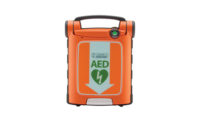1) Employees want it
Research done at Boston University finds that most employees want proactive drug testing to be conducted - especially when their safety can be jeopardized. An even greater majority want drug testing to be conducted after-the-fact - when safety incidents occur. Workers want to know that those around them are doing their best to produce, are doing their fair share, and want to remain safe. For many employees, this means that coworkers must remain sober and clean, otherwise people are not going to be at their best and someone will suffer.2) Drug testing works
It's hard to tell if social pressures from coworkers alone can limit personal drug use. The fear of testing is a prominent deterrent. There is evidence that post-incident drug testing can curtail serious workplace injuries. Since having a recordable or reportable safety incident involving an injury is fairly objective, determinations to test employees involved becomes clear-cut. If you have an incident, you will be tested for drug use. Random drug testing of various sorts combined with post-incident drug testing can serve as an even more meaningful deterrent - elevating an ongoing concern and desire for employees to stay drug-free if they want to keep their job.3) Be an employer of choice
Companies want a workforce that is productive, safe, and one that identifies positively with the community. When companies seek out the best employees, they need leverage to get the best. Part of this leverage for attracting employees is health benefits, wages, vacation time, career advancement and learning, flextime, and a focus on employee safety and health (which can include steps to create a drug-free workplace).
Safety and health may vary in terms of the perceived importance for some, but it remains attractive for many workers - especially those who have experienced a work environment and management philosophy that is not supportive of appropriate health and safety programs, including drug testing. This should be one of the primary points of leverage for health and safety professionals - becoming a business partner with the company to attract and maintain the best, most productive workers.
4) Don't leave a void in your policies
OK, you've got great written policies and procedures. You have several committees that are very effective, benefiting from good management support. All necessary training is conducted and physical workplace conditions are excellent. But say, in this scenario, you don't conduct any form of drug testing. If you want a robust safety process that covers all the bases - one that is as proactive as possible and at times as reactive as possible - you've got to consider drug testing. Your policies and procedures will have to consider what kind of abuse is a concern and what kind of testing should be taking place.Here's a quick look at testing options:
Pre-employment testing is just that - screening and testing that takes place before someone can be hired and prior to their beginning work.
Post-incident testing is the most objective and occurs whenever someone is involved in an incident or when injury occurs.
Random testing occurs largely because of external mandates such as those from the Department of Transportation, and is done according to set protocol.
Reasonable suspicion testing takes place when there are actions observed consistent with drug use. This will require that supervisors and managers be appropriately trained.
Return to duty and follow-up testing efforts help to keep the employee on track and away from drug use. This type of testing will help ensure a drug-free status if time away from work has occurred, and follow-up testing helps meet the needs of various employee assistance program professionals, the individual in question, and the employer.
5) It's part of your vision
When companies talk about their vision for excellence in any way, including safety, safety professionals and practitioners have to stake their claim. Look at drug testing as an investment in the employee and in the company that makes good business sense.If your vision for excellence in safety includes a zero-incident work environment, but lacks rigorous efforts to keep your workplace drug-free, it's unlikely that you'll make continuous progress toward your overall vision for safety - or the overall vision of your company.
John Stephens, former president and CEO of Roseburg Forest Products, believes that a rigorous drug-testing program helped his company save millions as well as helping to save union employees money on their health benefits. In a three-year period, with the union's cooperation, Roseburg dropped workers' compensation costs from $8 million per year down to $3 million. This was achieved largely through a proactive drug testing process that had buy-in from employees who wanted it and saw the benefits. Both a business and safety and health case can be made for drug testing.
